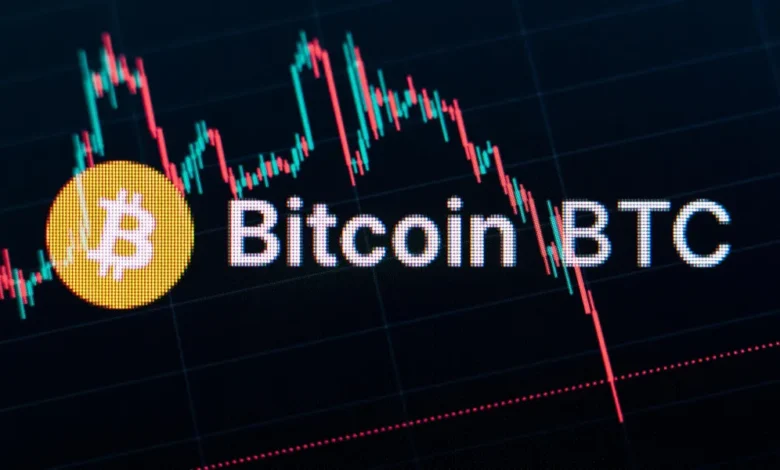Will the Price of Bitcoin Increase Again?

Due to the tension surrounding the Iran-Israel confrontation, the price of Bitcoin fell by almost 8% over the weekend. With a target of $73,000 as its all-time high, BTC was already having difficulty breaking out at $70,000. But the bears appeared to have been in control, driving the price down to $60,000. The halving of the value of BTC, a momentous occasion for the cryptocurrency industry, is rapidly approaching and is scheduled for April 20, 2024. Will the price of BTC continue to rise in an upward direction after making a small recovery?
Table of Contents
Bitcoin Market Performance and Price
Resilience and volatility are two characteristics of the most recent BTC market patterns. Over the previous day, the price of BTC increased by 2.5% to roughly $66,436.53. As market volatility has increased due to heightened political tensions in the Middle East, its value has recovered.
The value of BTC dropped throughout the previous week. The tendency is observed over a longer timeframe during which the growth of BTC somewhat decreased (by 2.84%). As of right now, CoinMarketCap estimates that its market capitalization is over $1.31 trillion, a substantial figure that illustrates the coin’s leading position in the ecosystem.
One noteworthy figure is the ratio of BTC’s volume to market capitalization, which is 3.31%. This ratio illustrates how active and liquid cryptocurrency trading is in relation to its total market value. The coin’s limited circulation quantity of 19.68 million BTC, out of an overall quantity available of 21 million BTC, means that its scarcity could persist and eventually affect prices.

March 14, 2024, was the day that BTC reached an all-time high of $73,750; however, since then, its price has dropped by about 11.74%. This steep drop from its peak demonstrates how much external events have affected its worth.
Factors Influencing the Price Increase of BTC
The price fluctuation of BTC is difficult to precisely anticipate due to the numerous factors that affect it. The prices of BTC are subject to various influences, including technological advancements, macroeconomic patterns, geopolitical shifts, and regulatory changes. In addition to its inherent volatility, other variables including events and market mood can also have an impact on the price of BTC.
1. BTC Price Effect of Halving
In approximately 5 days, there will likely be the fourth BTC halving. The event typically has a beneficial effect on the price of BTC, according to history. The rationale behind this is a drop in the rate of new coin mining, which lowers the currency’s supply and may raise its demand. As a result, BTC prices could rise sharply or stay the same.
The price may not necessarily follow this course, though. The price of BTC has increased in the past, although not always instantly. Half of the effect might not be felt right once; it might take a few weeks or even months. This is thus because every half has a different set of market circumstances and background.
According to market analyst Markus Thielen, miners would likely withdraw a significant amount of BTC following the impending halving, possibly liquidating $5 billion in BTC over the course of four to six months. As was the case with previous halving, this can cause BTC prices to move in an inverse direction. In addition, Thielen predicts that cryptocurrencies will be significantly impacted, but with a slower rally than BTC.

The biggest BTC miner, Marathon, is anticipated to progressively sell off its stock following the halving in order to prevent a decline in earnings. Up to 104 million dollars worthwhile of BTC might be traded every day if all miners used the same tactic, which might balance the supply and demand. According to Marathon CEO Peter Thiel, a break-even cost of $46,000 per BTC will be required to sustain profitability after the halves, meaning there won’t be much of a price shift in the six months that follow the half.
2. Tension in Geopolitics
Political unrest may have a significant effect on how much BTC, and other cryptocurrency prices fluctuate. The prolonged political standoff between Israel and Iran has increased market volatility, which has an impact on the price of altcoins like BTC. Investors become wary when geopolitical conflict arises because of the anxiety and uncertainty it causes in the market. This might cause the value of many other kinds of assets, including cryptocurrencies, to decline.
In this instance, the notable 8.4% decrease in BTC’s value following Iran’s attack on Israel demonstrates the response of the cryptocurrency market. Investors may shift their focus from riskier assets like cryptocurrency to safer havens like gold or government bonds.
The price of BTC and other cryptocurrencies continues to be impacted should the conflict get more complex and tense. The circumstances can cause the cryptocurrency market to become more volatile. However, the price of BTC and other digital assets may rise if the tension eases and the situation become stable.
Conclusion
The way BTC is performing right now demonstrates how several forces work together to influence its market value. After a period of decrease, the value of cryptocurrencies has somewhat increased, suggesting a potential recovery; nonetheless, the market is unstable due to ongoing geopolitical tensions and impending halving events.
Due to the halving event’s influence on supply, prices have usually increased; nevertheless, the geopolitical environment could lead to increased uncertainty. Any investing selections should be made after doing extensive and careful study. It is critical to remember your investing objectives and risk tolerance. Future price movements of BTC are typically impacted by both predicted and unanticipated variables.
People also Reading.
What is next move of BTC? Boom Or bust?
With Big Tech rushing to comply with EU regulations, investigations are anticipated.
Trump and Biden win Michigan primaries, but Democrats launch Gaza protest vote.
A US airman set himself on fire outside the Israeli Embassy in Washington.
Google implements changes for users and app developers as EU tech rules loom.




